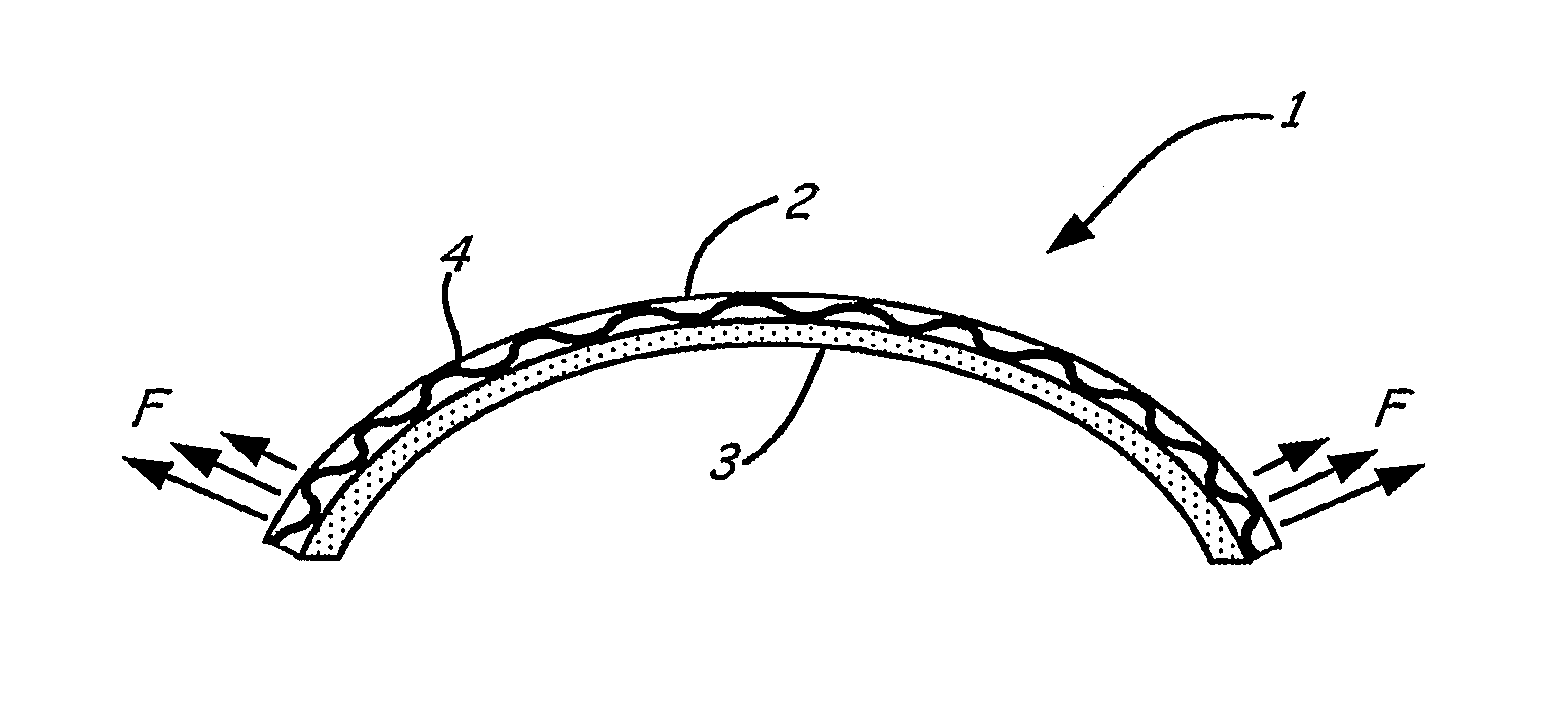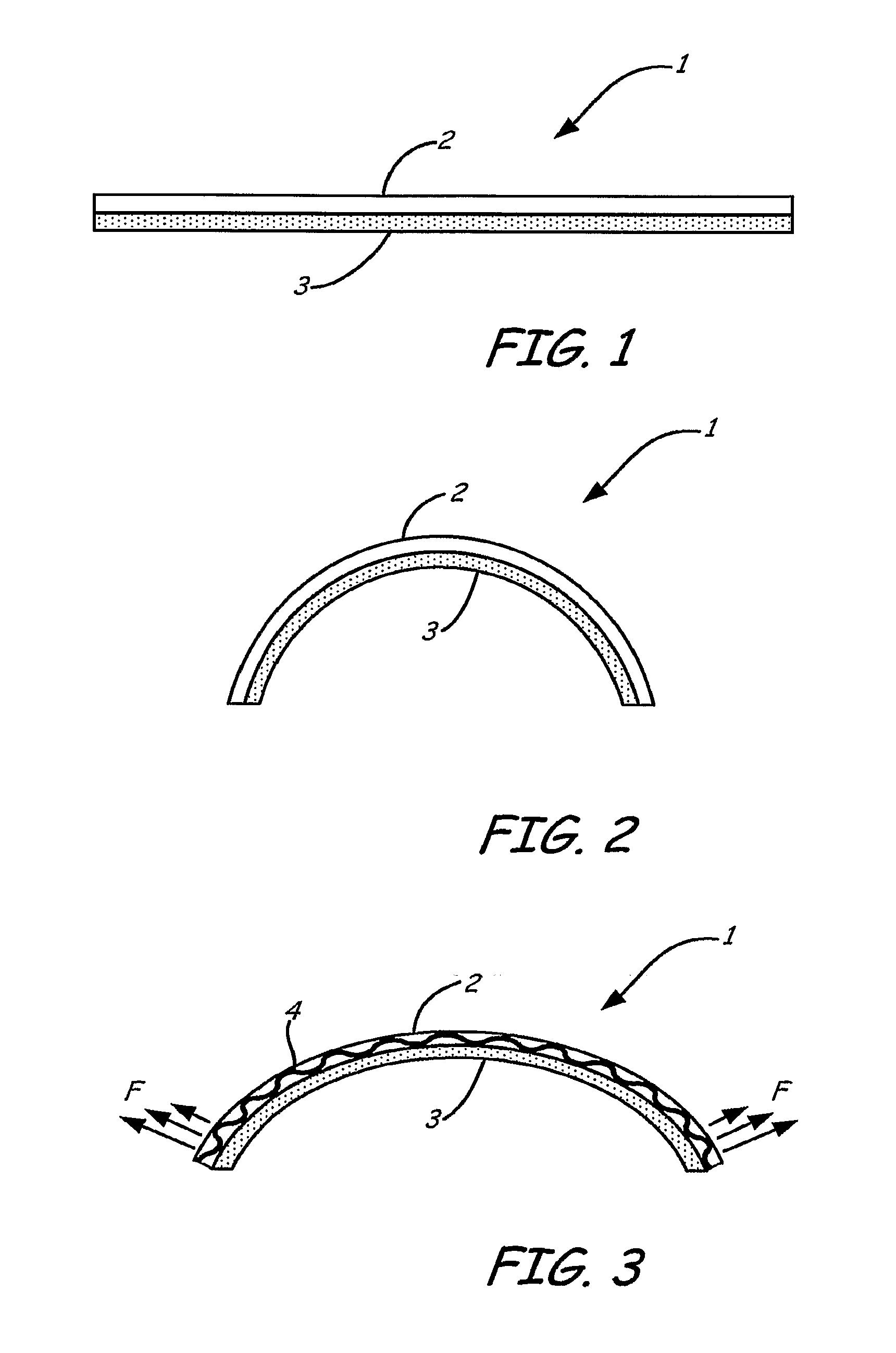Delayed Action Spring Force Element for Nasal Dilators
a technology of delayed action and spring force, which is applied in the field of delayed action spring force element for nasal dilators, can solve the problems of affecting the use of pressure sensitive acrylate adhesives, affecting the effect of dilating effect,
- Summary
- Abstract
- Description
- Claims
- Application Information
AI Technical Summary
Benefits of technology
Problems solved by technology
Method used
Image
Examples
Embodiment Construction
[0016]The present invention comprises two elements to form a nasal dilator strip 1, as shown in FIG. 1. The spring force layer 2 has minimal spring force in its latent, typically flattened state as shown in FIG. 1. The skin contact layer 3 provides a base for the adhesion to the nose and is most likely a hydrocolloid or similar material. An optional fabric or mesh framework 4, as shown in FIG. 3, can be incorporated into the spring force layer 2 to provide a lattice that can be both contracted and stiffened.
[0017]Although the embodiments contained herein describe these elements in the form of layers, other constructions, such as embedded elements, are within the scope of the present invention.
[0018]Nasal dilator strip 1 is attached to the nose by bending strip 1 to conform to the outer surface of the nose, as shown in FIG. 2. Upon some sort of activation process, the spring force layer 2 contracts, thereby gaining an outward spring force F sufficient to act as a nasal dilator, which...
PUM
 Login to View More
Login to View More Abstract
Description
Claims
Application Information
 Login to View More
Login to View More - R&D
- Intellectual Property
- Life Sciences
- Materials
- Tech Scout
- Unparalleled Data Quality
- Higher Quality Content
- 60% Fewer Hallucinations
Browse by: Latest US Patents, China's latest patents, Technical Efficacy Thesaurus, Application Domain, Technology Topic, Popular Technical Reports.
© 2025 PatSnap. All rights reserved.Legal|Privacy policy|Modern Slavery Act Transparency Statement|Sitemap|About US| Contact US: help@patsnap.com


